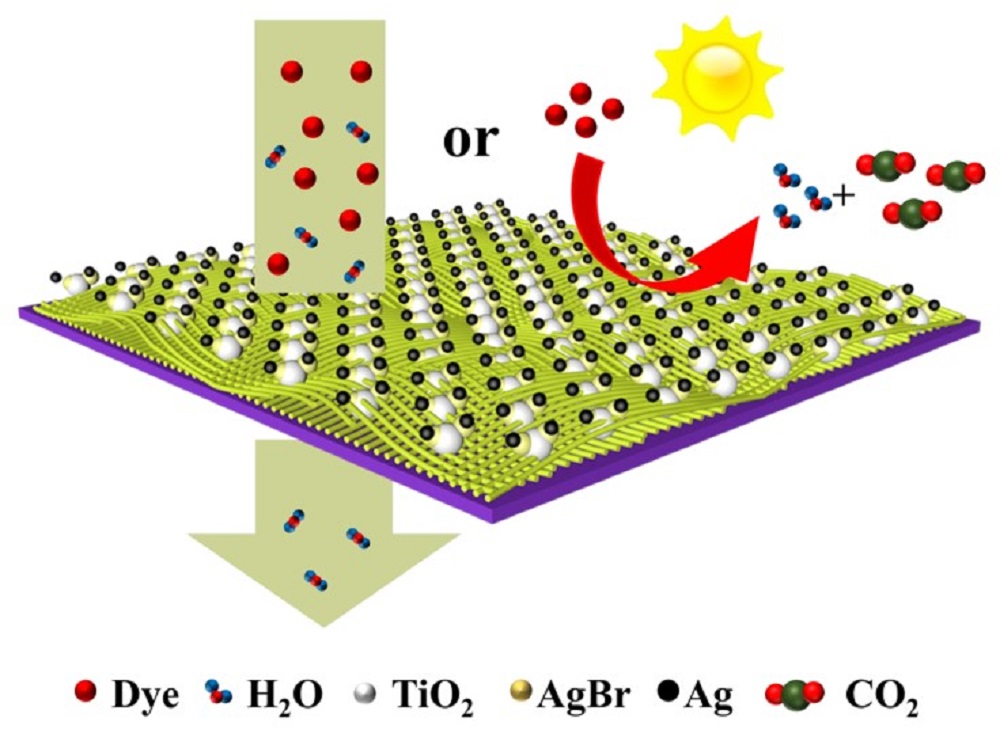1 Introduction
2 Experimental
2.1 Materials and chemicals
2.2 Fabrication of PAN-ETA/CS-TiO2/Ag-AgBr membrane
2.2.1 Preparation of PAN-ETA membrane
2.2.2 Preparation of PAN-ETA/CS-TiO2 membrane
2.2.3 Preparation of PAN-ETA/CS-TiO2/Ag-AgBr membrane
2.3 Characterization
2.4 Dye filtration performance
2.5 Photocatalysis performance
3 Results and discussion
3.1 Characterization of PAN-ETA and composite membranes
3.2 Dye rejection performance of membrane
3.3 Photocatalysis properties of PAN-ETA/CS-TiO2/Ag-AgBr
Tab.1 Comparison of the photodegradation performance of different membranes |
| Membrane | Degradation condition a) | Irradiation condition | Degradation efficiency | Ref. | |
|---|---|---|---|---|---|
| Membrane area | Dye solution volume (concentration) | ||||
| PVDF@CuFe2O4 | 10 cm2 | 50 mL MB (100 mg/L) | Vis, 30 min | 99% | [16] |
| PDA/RGO/Ag3PO4/PVDF | 36 cm2 | 100 mL MEB (20 mg/L) | Vis, 480 min | 96.8% | [48] |
| PVDF/GO/ZnO | 9 cm2 | 60 mL MEB (10 mg/L) | Vis, 100 min | 86.8% | [49] |
| ZnO/PAN nanofiber | 50 mg | 10 mL MEB (10 mg/L) | Vis, 480 min | 96% | [50] |
| Ag/TiO2/PVDF | – | 30 mL MEB (10 mg/L) | Vis, 100 min | 51% | [51] |
| Ag/g-C3N4/PES | 20 cm2 | 50 mL MO (10 mg/L) | Vis, 100 min | 77% | [52] |
| PS/CCA/TiO2 | 25 cm2 | 100 mL RhB (10 mg/L) | Vis, 180 min | 82.4% | [53] |
| Pluronic-TiO2 | – | 12 mL RhB (100 μmol/L) | UV, 480 min | 90% | [54] |
| PAN-ETA/CS-TiO2/Ag-AgBr | 4 cm2 | 20 mL RhB (10 mg/L) 20 mL MEB (10 mg/L) | Vis, 30 min | 96.81% 90.75% | This work |













